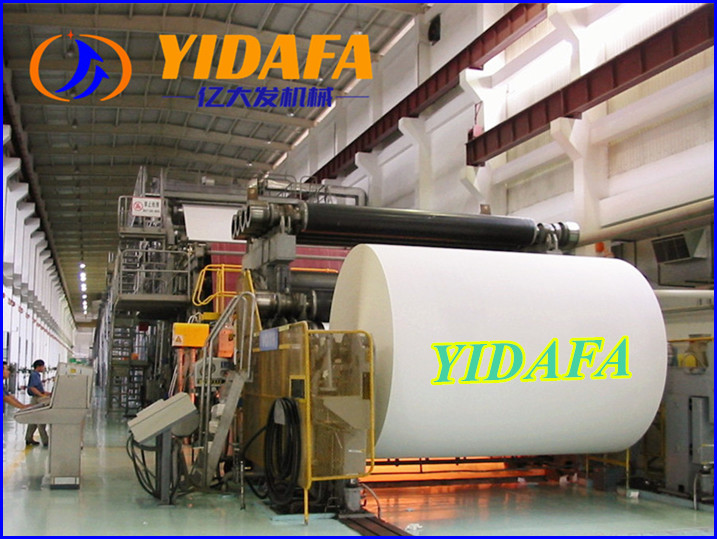ANALYSIS OF THE PATTERN AND TRENDS OF CHINA'S CULTURAL PAPER INDUSTRY IN 2020
1、 Overview of Cultural Paper
Cultural paper refers to writing and printing paper used to spread cultural knowledge, suitable for printing books, textbooks, magazines, notebooks, color pictures, etc. It mainly includes: coated paper, writing paper, double adhesive paper, light coated paper, and newsprint, etc. According to data from the China Paper Association, cultural paper accounted for 23.22% of the national consumption of paper and paperboard in 2019.
Compared to packaging paper and specialty paper, cultural paper has a stronger demand and is less affected by the external economic environment and downstream manufacturing industry. For example, the scale of China's book market continues to expand, making it the largest ballast stone in the cultural paper market. From 2010 to 2019, the total retail sales of books in China increased from 36.9 billion to 102.27 billion, more than doubling the size of the retail market. Especially after the relaxation of the second child policy, the number of new students significantly increased from 2016 to 2017, and the number of students entering the school will show an increasing trend in the coming years, providing good support for the demand for textbooks and teaching aids; On the other hand, in recent years, the consumption of party and government journals has significantly increased, especially in 2021, which marks the 100th anniversary of the founding of the Communist Party of China. There is a growing trend in the use of promotional paper. These factors will drive the stable upward trend of the cultural paper market.

2、 Market competition pattern
In recent years, due to the rapid development of online media and the relative decline of traditional media, the cultural paper market has gradually become polarized. The production of newsprint has gradually decreased with the decline of newspapers. In 2019, the production of newsprint was 1.5 million tons, less than half of the production in 2012. In contrast, the production of printing and writing paper, as the main force for publishing printed materials, has remained between 17 and 18 million tons. Coated printing paper is often used for business printing, such as exhibitions, real estate, catering, and other downstream areas, which are closely related to the activity of commercial activities. Therefore, due to the significant downward pressure on the economy from 2018 to 2019, demand has decreased.
From the perspective of competition among enterprises, both the double adhesive paper and coated paper markets are in a stage of rapid increase in concentration. According to production capacity statistics, the proportion of double adhesive paper CR4 is currently 58.2%. The production capacity of Chenming, Sun, Huatai, and Asia Pacific Senbo respectively reaches 28.6%, 14.6%, 9.4%, and 5.6%. The entry threshold for cultural paper is higher than that of packaging paper, and the advantages of raw materials and manufacturing are more prominent. Especially, the raw material supply and manufacturing capacity of large factories are gradually widening the gap with small factories, and the pace of expansion of large factories is constantly increasing. Clearing small production capacity will become one of the future development trends of the industry.
3、 Changes in raw material prices
Pulp is the most important raw material in the papermaking industry, and the price of pulp is not only affected by fluctuations in raw material prices such as waste paper, but also by downstream demand. As for the demand for cultural paper, the COVID-19 in 2020 actually led to a delay in the opening of primary and secondary schools, and the market demand was delayed in about March of the previous year. At the same time, as the progress of the resumption of pulp production is relatively lagging behind the downstream industry, the pulp price will rise slightly from April to May under the superposition of multiple factors. On the other hand, starting from the autumn of 2019, all grade textbooks in primary and secondary schools across the country will use the departmental version of textbooks